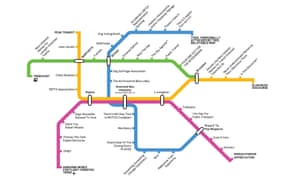Joshua A. Geltzer at PoliticoMagazine: “Democracy’s lamentations sometimes seem deafening these days. “Democracy is dying,” proclaimed a recent article in Foreign Policy—and another in the Guardian, and yet another in Quartz. We’ve reached “the end of democracy,” avows a new book—as well as an op-ed in the Washington Post.
But what if these perspectives have it all backwards? What if our problem isn’t too little democracy, but too much?
There’s no doubt that democracy in the United States appears on shaky ground. That’s not because 2016 marked the first time in American history that the presidency was captured by a candidate with no political or military experience. It’s not even because Donald Trump did so despite losing the popular vote by almost 3 million ballots, with his adversary garnering the most votes ever cast for a losing presidential candidate.
It’s because the 2016 election revealed new vulnerabilities in our democracy, generated by social media’s explosion and utilized by Russia and Russian-linked actors—possibly including Trump’s team itself. And it’s also because the aftermath of that election has laid bare a Congress so polarized, gridlocked and downright incapacitated that it has proved unable even to keep our government from shutting down and has consistently failed to fulfill its responsibility to exercise meaningful oversight of the executive branch.
What ails us? The current vogue is to place the blame on the inadequacies of our incarnation of democracy. The brilliant Yascha Mounk, for example, argues that the American people may think they’re living in a democracy, but—unbeknownst to them—it’s really all a charade. On Mounk’s account, Americans speak at town halls, organize on behalf of candidates and cast ballots; but, because the game’s been rigged by the powerful, all of that activity doesn’t really matter compared to the influence of the well-placed and well-heeled. In the words of two political scientists quoted favorably by Mounk, what we think of as democracy in action really amounts to “a minuscule, near-zero, statistically non-significant impact upon public policy.”
Some suggest that democracy’s insufficiencies are global, and the defining problem of our times. In his magisterial account of democracy’s fading allure in Hungary and Poland, Roger Cohen echoes earlier scholars in seeing democracy now eclipsed by “competitive authoritarianism, a form of European single-party rule that retains a veneer of democracy while skewing the contest sufficiently to ensure it is likely to yield only one result.”
But while these commentators are right that the cracks are there, the cause is the very opposite of what they claim, at least when it comes to America. The problem isn’t that democracy is in short supply in the United States. It’s that technology has helped to unleash hyper-democratization—a shift away from the mediated, checked republic that America’s founders carefully crafted toward an impulsive, unleashed direct democracy that’s indulging the worst impulses of our most extreme elements.
To put it bluntly, we’re increasingly ruled by an online mob. And it’s a mob getting besieged with misinformation…(More)”.

